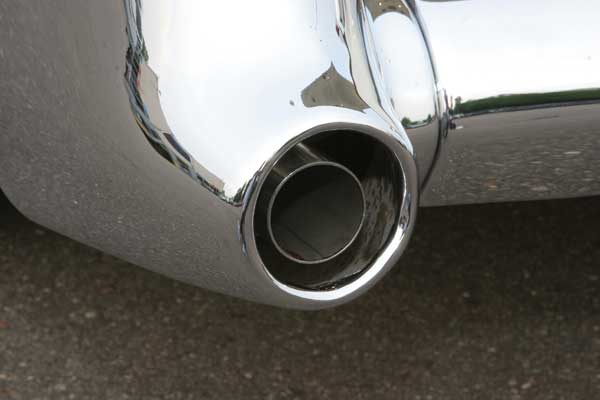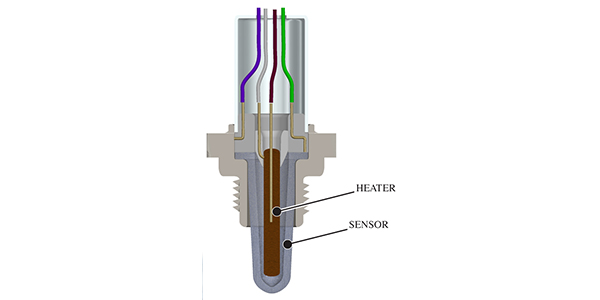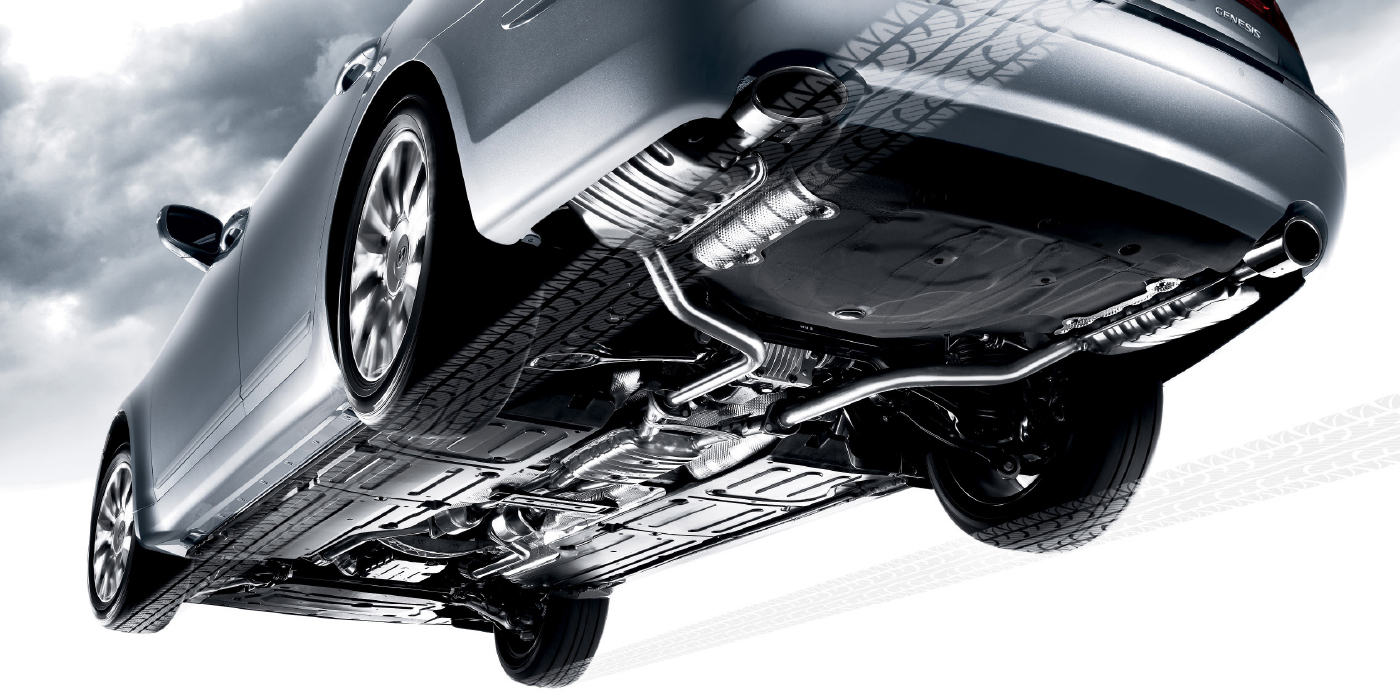 When I was a kid, I used to watch my dad, who started out as a diesel mechanic, tune up cars and trucks from time to time. He would turn the adjustment screws on the carburetor until the engine smoothed out and started to purr. Then, after listening closely to the rumbling of the motor, the adjustment screws would get one final tweak. He would always bend down and cup his hand around the belching tail pipe exhaust and take a big sniff of the fumes, and then go back to his adjustments. That was back in the 60s and 70s before PCMs, O2 sensors and catalytic converters.
When I was a kid, I used to watch my dad, who started out as a diesel mechanic, tune up cars and trucks from time to time. He would turn the adjustment screws on the carburetor until the engine smoothed out and started to purr. Then, after listening closely to the rumbling of the motor, the adjustment screws would get one final tweak. He would always bend down and cup his hand around the belching tail pipe exhaust and take a big sniff of the fumes, and then go back to his adjustments. That was back in the 60s and 70s before PCMs, O2 sensors and catalytic converters.
Many years later, I attended some classes where I finally realized what he was doing with a hand full of exhaust. He was actually taking an “old school” measurement of the “Stoichiometric ratio” (stoi-kE-‘a-me-trek). I also realized that he could not have done it with a stuffed up nose or breathing through his mouth.
Stoichiometry is a branch of chemistry that deals with the relative quantities of reactants and products in chemical reactions.
We need four things to operate a gasoline engine — fuel, air, compression and spark. If the fuel or air isn’t at the right values, you’re not going to get much of a bang out of that engine, no matter how much compression or spark you have. The ratio to fuel and air is the key to achieve complete combustion. In simpler terms, it’s “the perfect air/fuel mixture.”
The ideal mixture ratio is 14.7:1 — that’s 14.7 parts air to 1 part fuel. Even though the perfect mixture is hard to achieve throughout every condition we put an engine under, it can be extremely close to perfect. This is made possible with the computer-driven systems we use in today’s cars. Modern vehicles measure fuel and air before and after the combustion chamber.
The heart of this fuel/ratio control is actually in the exhaust. Just as my father would “sniff” the exhaust, so does the O2 sensor. It takes a sample of the exhaust and relays that information back to the main computer in the car.
Why do I need to know this if you are looking for an exhaust leak? Well, it has more to do with the health of the catalytic converter and engine. In the past, you could get away with an exhaust leak or the mixture being off because we didn’t have to worry about the catalytic converter melting or clogging up. But these days that “perfect” mixture is crucial to the life of the converter.
The design of the converter relies on that perfect mixture to maintain its ability to remove the nitrogen oxides (NOx) and other harmful hydrocarbons. If an exhaust manifold gasket or flange is leaking, the computer is going to start taking guesses at the mixture, or richen up the fuel mixture to take care of the extra air, but the longer this is left alone, the more likely permanent damage will be done to the converter. Maybe a better way of putting it is: “The catalytic converter is built on the assumption that the Stoichiometric ratio is maintained for the life of the vehicle.”
Some time ago I had an old customer bring in an aftermarket computer-controlled fuel injection system he wanted me to install on his hot rod. This system was a complete “do-it-yourself” ECU. It had a few basic preset programs you could load into the ECM that would allow the engine to run, but there was a lot more “tweaking” that could be done with it.
Every parameter on the engine could be adjusted and viewed on a scope or graph on the laptop. Everything from the MAP sensor, TPS, spark advance, coolant temp, injector pulse width and other sensor information. At first, I figured I could put some basic values in from the manual that came with the ECM and get it pretty close. That didn’t work to well.
If you took the car out for a run, it would have flat spots through the power range, or at times, even cough up a huge flame from exhaust. None of it was due to a mechanical problem; it was the fact that the aftermarket headers leaked and caused the Oxygen sensors to think that the engine was running lean. The ECU would increase the injectors’ pulse width to increase the amount of fuel in the engine.
What made the difference in this case? The understanding of the Stoichiometric ratio. After sealing the exhaust headers and mapping the engine thru the power band, I could see where the ratio was by way of the “Lambda” readings from the O2 sensors. (Plus or minus 1) It took some time, but I eventually got it running like the hot rod he was looking for.
So why do I need to know this?
Better performance, longer lasting components and longer lasting customer cars. If we know we want to maintain a perfect Stoichiometric ratio (14.7 to 1), then we know that the “Actual Fuel Ratio” should be as close to the Stoichiometric value as possible. This is where looking at the Mass Air Flow values, the O2 values, injector pulse, etc … can be so important.
The idea is to achieve that perfect mixture. You’ll notice that on the newer CAN systems there are a couple of new parameters added too. These include the catalytic temperature for instance, a good thing to know, and something else that should be a real boost to diagnosing — the “Command Equivalence Ratio.” This is nothing more than the “Lambda” reading, usually indicated by the number “1.” Knowing the actual value “Lambda” reading can offer a lot of information to the conditions inside the combustion chamber.
These days with fuel economy a huge concern, keeping that perfect mixture is crucial, but it would never have been possible without the computer systems we have today. Engineers have managed to clean up the exhaust, raise the fuel economy and improve performance, and all this is because they followed that one little formula, the Stoichiometric ratio.
My dad would turn those idle screws on the carburetor and adjust away all the vibrations from the engine. Then, by reaching back and getting a hand full of exhaust and taking a whiff of it, he could tell if it was rich or lean. He too, was trying to reach that optimum Stoichiometric ratio. I do the same thing today, however not with a screw driver, but with a laptop.
Just think, it takes me a laptop, some complicated computer software and data stream information to keep a precise control on the Stoichiometric ratio. In good old dad’s era, close was pretty good, and a whiff of the exhaust told all that needed to be known. I guess you could say that he could accomplish the same thing, with his own brand of software. I suppose that’s what we call progress.




